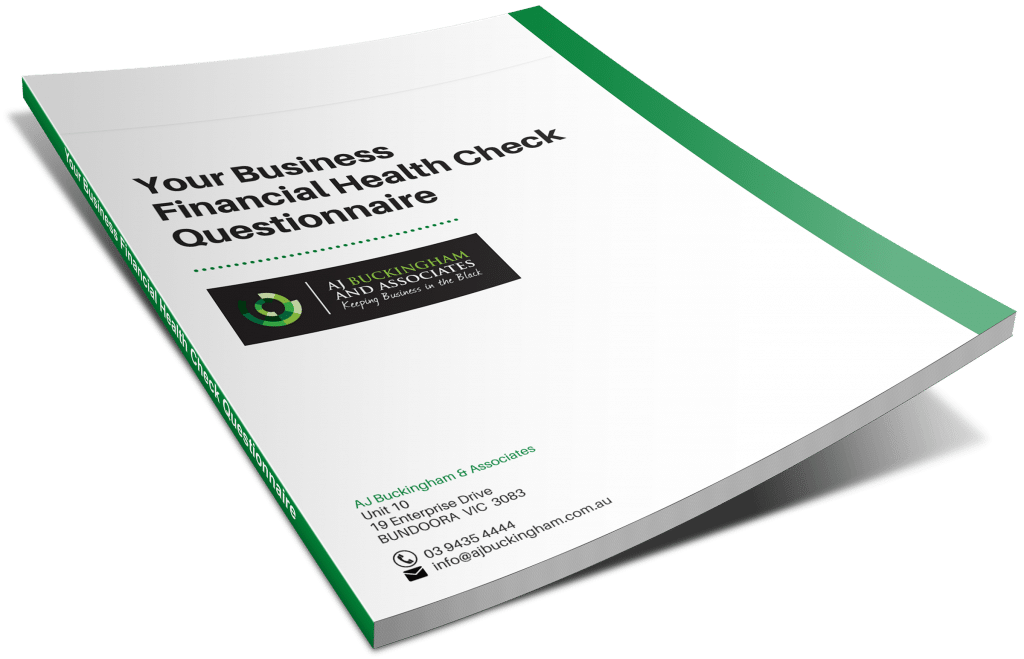According to the Australian Securities and Investment Commission’s (ASIC) annual report published in October 2013, the number of businesses registered in Australia has reached a record 2.03 million. The report also indicated that nearly 200 businesses a week in this country enter external administration.

Of the reported liquidations, 81% involved businesses with less than 20 employees (65% had less than 5 employees) and 85% had assets of $100K or less, 43% had estimated liabilities of $250K or less and 65% had a reported deficiency of $500K or less. Low consumer confidence and a high Australian dollar have certainly contributed to the demise of many businesses particularly in the retail, manufacturing and building and construction sectors.
While business failures are a fact of life, very few of these collapses happen overnight. Generally there are warning signs and if you don’t recognise or treat the symptoms like poor cash flow then the end could be in sight. If you can identify with any of these common issues we urge you to contact us.
1. Cash Flow Management/Debt Reliance
One symptom of a ‘sick’ business is reliance on borrowed funds to service loans and other costs including superannuation, wages and tax. If you’re experiencing difficulties paying creditors and ongoing tax obligations then there is obviously a cash flow or profitability problem. Sales could be inadequate or your pricing model might be wrong. If you are selling enough product but not collecting payments on time and relying on credit cards to fund expenses, then you are on a collision course. Reduce debt immediately by collecting outstanding debtors, renegotiate terms with your creditors and suppliers, sell any excess or slow moving inventory and double check your pricing.
2. A Lack of New Customers or Loss of Key Customers
Remember the early days of your business when you were hungry, marketed at every opportunity, networked and chased every lead or prospect? The new customers were flowing freely but the landscape has changed. The moment you take your foot off the marketing pedal the business loses momentum and new customers dry up. Not only that, some existing customers might migrate and these key customers have provided consistent revenue streams for years. Losing existing customers is a classic symptom of a business in trouble but failing to attract new customers is a death sentence.
The moral of the story is marketing should never be off the agenda. When things get tight most business owners look to cut costs including their marketing budget. While this basic strategy has merit, you should look to cut the ‘fat’ not your marketing. You need to assess what is working, what’s not working and what needs working on before you decide to trim your marketing spend.

3. Poor Record Keeping
If your business can’t cover its expenses, then clearly the end is in sight. Losses are simply unsustainable for any period of time and make sure you know how much money is in the bank, your break-even point and what products or services actually make you money. If your revenue falls, identify why. Unfortunately, too many business owners put their head in the sand when it comes to their financials. You don’t need to be an accountant, you just need to know which numbers are important including the profit drivers and key performance indicators in your business. Up to date records let you make informed business decisions.
4. Street Appeal
Sometimes the numbers aren’t the only sign of a business in distress. The actual look of the business can be a giveaway due to a lack of maintenance. When was the last time you steam cleaned the carpets, is your reception area full of broken furniture, cobwebs and damaged blinds? It could be time for a spring clean or possibly a ‘makeover’. Customers will judge you and your business in a nano-second these days.
Employees generally know if a business is on a slippery slope and they may drop their guard, their dress standards and attitude towards customers. Listen to how they answer the phone and do they arrive on time every day?
5. Delegate Duties
Every business owner needs to delegate some basic tasks to free up some time to address the more important issues. A business owner who fails to delegate some of their work will have sleepless nights and the quality of their work will also suffer. Trust the staff to perform their roles and if you need more resources, consider outsourcing to groups like www.odesk.com, www.freelancer.com.au or www.fiverr.com.
6. Discount Disaster
Businesses that rely on the strategy of discounting to attract new customers often dig a hole for themselves. It is a dangerous practice because you reduce your profit margins. Research your competitor’s pricing and stop competing on price. Find ways to add value to your customers and deliver awesome service.

7. High Employee Turnover
A sure sign that a business could be in trouble is high staff turnover. Every time an employee leaves you suffer a loss of intellectual capital. If you run a service type business (e.g. hairdressing, beauty therapy or dentist) you might also lose customers when these staff members depart. New staff have to learn your systems and processes and too often it is the owner who has to do the training and cover for their inexperience and mistakes. The answer is to address the underlying workplace issues and document your systems and procedures so a loss of staff doesn’t mean a loss of productivity or profits. Policies and procedures manuals are old school and being replaced by videos that make the induction process so much easier.

